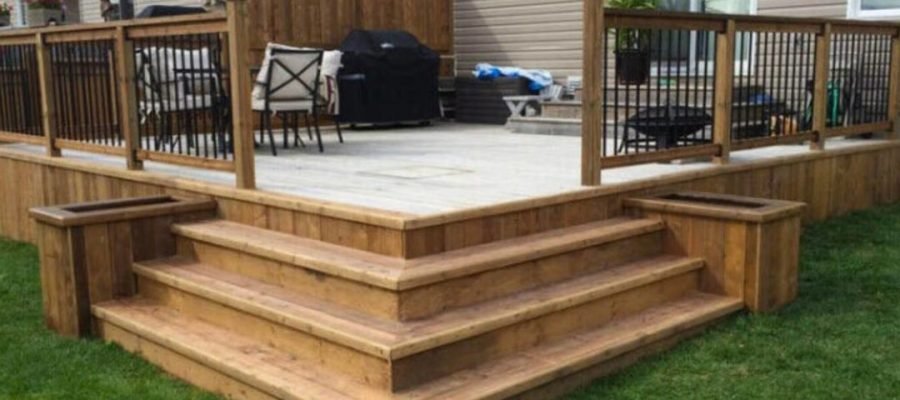How to Clean Decking Naturally: Eco-Friendly…
Discover how to clean decking naturally in Auckland. Use DIY solutions like vinegar & baking…

Is your deck stain peeling, fading, or looking patchy after years of Auckland’s relentless rain and sun? You’re not alone—many homeowners, DIY enthusiasts, and property managers face the same frustration when their once-pristine deck starts showing its age. Stripping off that old, tired stain is the key to restoring your outdoor space and preparing it for a fresh finish. But where do you start? In this in-depth guide, we’ll walk you through how to remove deck stain step-by-step, exploring proven methods like chemical stripping, power washing, sanding, and more. We’ll cover tools, safety tips, and expert recommendations to ensure your deck looks stunning without damage. Whether you’re reviving a family deck in Henderson or maintaining a rental in Mt Eden, this article has you covered. Let’s get started!
Before diving into the how-to, let’s unpack why removing old deck stain is a critical first step in any refinishing project. It’s tempting to slap on a new coat and call it a day, but that shortcut can backfire. Here’s why stripping matters:
For Auckland homeowners, where rainfall averages 1,200mm annually (NIWA data) and UV rays beat down in summer, old stain often deteriorates fast. Property managers maintaining rentals in leafy suburbs like Titirangi or business owners with commercial decks in Newmarket will also see the value in starting fresh. Stripping isn’t just cosmetic—it’s a foundation for durability.
There’s no universal “best” way to remove deck stain—it depends on the stain type (oil-based or water-based), its condition, your tools, and your patience. Below, we’ll explore four effective methods: chemical stripping, power washing, sanding, and a hybrid approach. Each includes detailed steps, pros, cons, and Auckland-specific tips to help you choose.
Chemical strippers are the heavy hitters of stain removal, breaking down even the toughest coatings so you can scrub them away. They’re ideal for thick, old stains or decks with intricate railings.
“Test on a small area first,” advises decking expert Sarah Milne from Onehunga. “Softer woods like cedar, common in older Auckland homes, can react badly to harsh strippers.”
Jane, a DIYer from Papakura, used Bio-Strip on her 10-year-old kwila deck. “It took two applications, but the stain came off without damaging the wood. My plants survived, too!”

Power washing blasts away loose stain and grime with high-pressure water. It’s fast and satisfying but demands caution to avoid harming the wood.
“Keep pressure low near edges and knots,” says contractor James Patel from West Auckland. “Our wet winters soften deck boards—too much force can ruin them.”
Mark, a property manager in Ponsonby, power-washed a rental’s pine deck. “It took 20 minutes and looked great, but I had to sand afterward because the grain lifted slightly.”
Sanding grinds away stain mechanically, offering precision and a polished result. It’s labor-intensive but perfect for light stains or final smoothing.
“Wear a mask,” says DIY expert Lisa Tan from Mt Roskill. “Auckland’s pollen and sawdust combo can make sanding a sneezy mess.”
Tom, a Remuera homeowner, sanded his cedar deck after stripping. “It took a weekend, but the smooth finish was worth it—my new stain looks flawless.”
For tough jobs, combine methods for the best results. Strip with chemicals, power wash residue, then sand for a flawless surface.
“Space it out over a dry weekend,” suggests Sarah Milne. “Auckland’s humidity can slow drying between steps.”
Removing deck stain is straightforward but not without risks. Follow these precautions to protect yourself, your deck, and your property:
Common Mistakes: Rushing drying time (leads to mold under new stain) or skipping prep (leaves residue that ruins adhesion).
Stripping is half the battle—prepping your deck for refinishing seals the deal. Here’s how to get it ready:
Expert Tip: “Apply stain on a cloudy day,” says James Patel. “Auckland’s UV can bake it unevenly if it’s too sunny.”
Let’s debunk some myths about removing deck stain:
Truth: Modern formulas like Bio-Strip are effective and safer.
Removing deck stain is a game-changer for Auckland homeowners, DIYers, and property managers looking to refresh their outdoor spaces. Chemical strippers tackle tough coatings, power washing speeds up the process, sanding perfects the finish, and a hybrid approach combines the best of all worlds. For most decks, we recommend starting with an eco-friendly stripper, followed by low-pressure washing and a light sand—effective and gentle on Auckland’s weather-beaten timber. With the right tools and patience, you’ll set the stage for a stunning new stain that lasts.
Ready to transform your deck?
🚀 Thinking About a Deck Makeover?
📞 Call My Homes Decking Expert at +64 22 315 8987 for a Free Quote Today!
Strip away the old, prep with care, and enjoy a deck that shines—rain or shine!
Discover how to clean decking naturally in Auckland. Use DIY solutions like vinegar & baking…
Kwila Decking for Auckland Homeowners How Long Does Kwila Decking Last? A Comprehensive Guide for…
How to Build a Deck: A Comprehensive Step-by-Step Guide Introduction Did you know that adding…